How to Build a DIY Rustic Coffee Table for Under $100
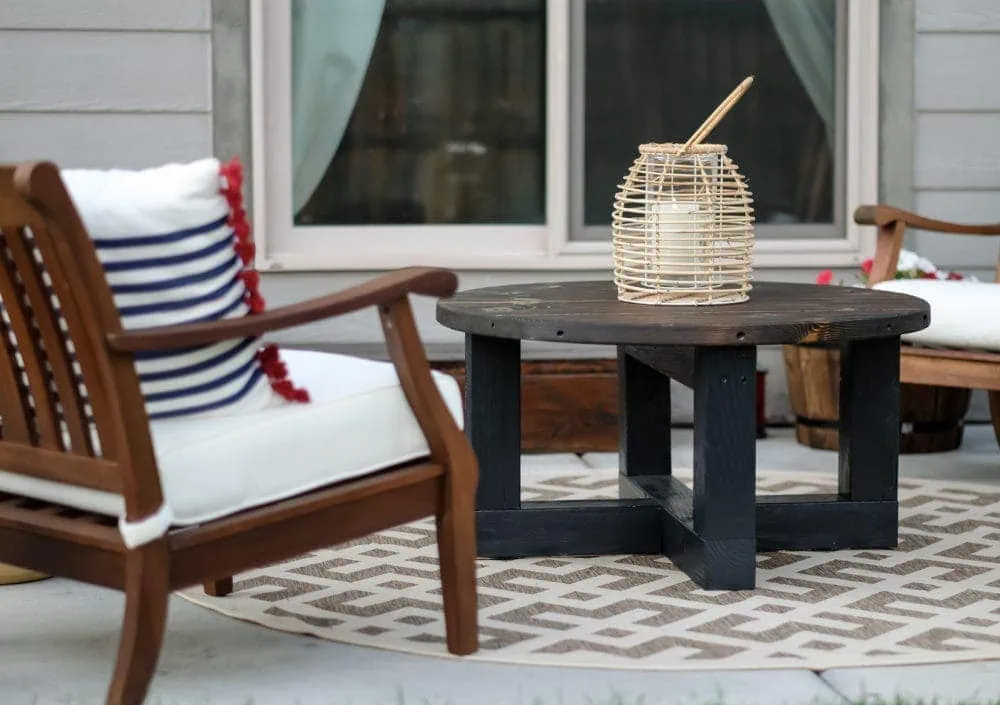
This easy-to-follow DIY tutorial will guide you through building a rustic round outdoor coffee table for your backyard patio or deck. The project can be accomplished in a weekend with basic power tools, and a little elbow grease.
When I was coming up with the design plan for our patio makeover, I had a hard time finding the right rustic coffee table. I wanted something fairly rustic, yet modern and not too big, but not too small. Oh and it needed to be under $100.
If you’re thinking those three things are rare to find all in one piece of furniture, you are most definitely right! Since we do all of our home projects with cash, this is a dilemma I run into quite often. But, you guys! Decorating on a budget IS possible, it just takes a little bit of creativity ;). Today I am sharing our step-by-step tutorial to create a DIY rustic coffee table.
This site uses ads and affiliate content as an Amazon associate earning on qualifying purchases. Disclosure.
How to Build a Rustic Outdoor Coffee Table
If you follow along with my Instagram stories then you may have already seen some sneak peeks! I try to share the behind- the-scenes of our projects in real-time over there, so make sure you are following along to get the inside scoop!
What I love most about this rustic coffee table is that it can be used indoors or outdoors. So if I ever feel like switching things up (which happens a lot), I can relocate this table to almost any other room in the house. The design I chose features a round top centered over a geometric base to give it the rustic, yet modern look I was after.
OK, enough words. Let’s jump into the tutorial!
Supplies used:
- (2) 8FT 2″x 10″ Premium #2 and better Douglas Fir Lumbar
- (2) 8FT 4″ x 4″ Premium #2 and better Douglas Fir Lumbar
- Tape measure
- Circular Saw
- (1) 3/8″ Wood Dowel kit
- 3/8″ unfinished wood dowel rod
- 3/8″ Drill bit (at least 12″+ long)
- Wood Glue
- Hammer
- 6″ construction screws
- (1) small nail
- Jig Saw
- Sander
- Router
- Minwax Dark Walnut Wood Stain
- Minwax Polyurethane Wipe-on Sealant
- Valispar black paint in the color Noir
How To Build A Coffee Table Base
Below is the photo we referenced to create the base:
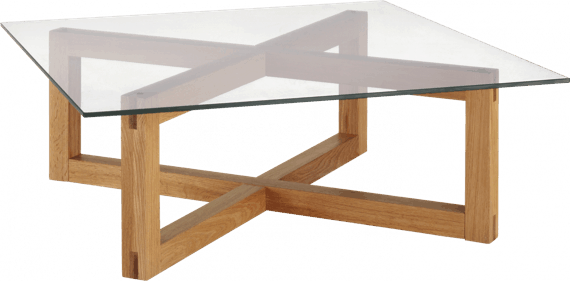
Start by creating the rectangular-shaped center.

Cutting The Boards
To do this we used 4″ x 4″ boards. Measure, mark, and cut two 4″ x 4″ boards so they are 31″ long. These will be the top and bottom of the rectangle.
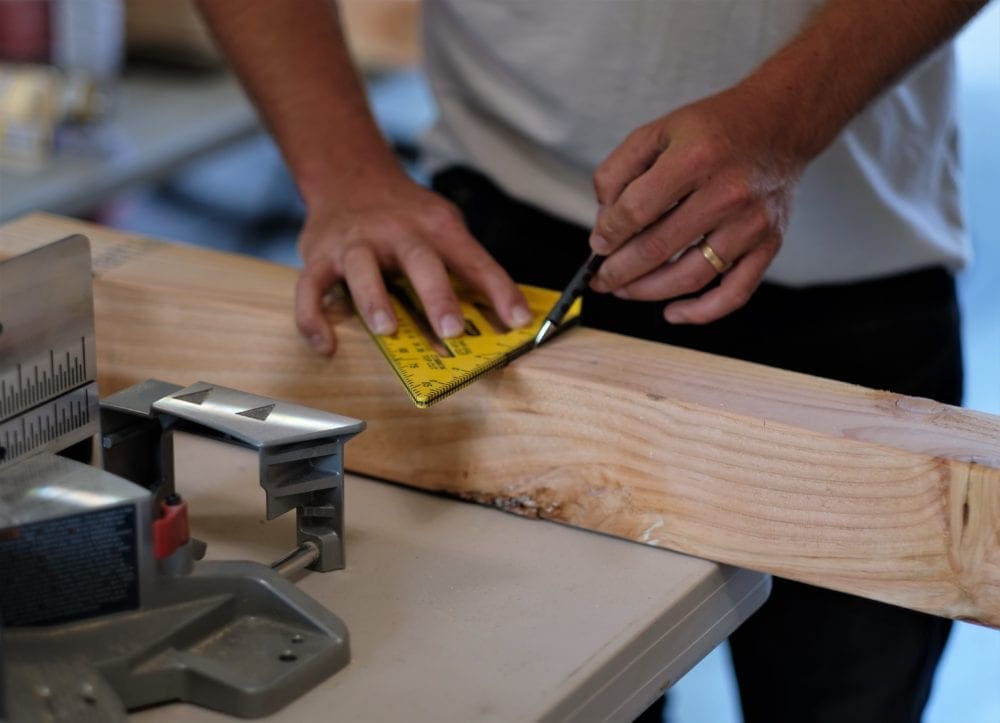
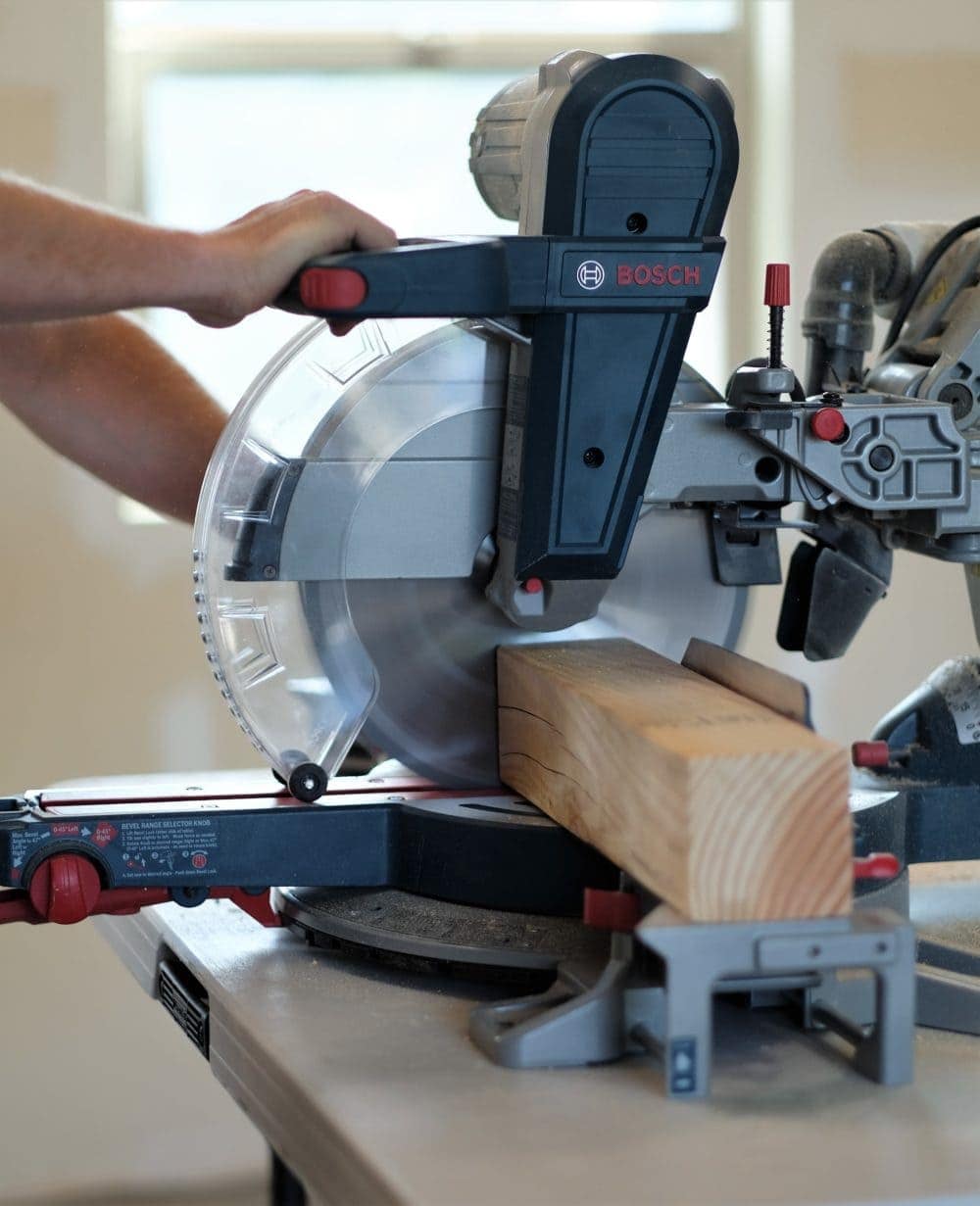
Repeat these steps to create the vertical pieces of the rectangle, but this time cutting your 4″ x 4″ boards into two 9.5″ sections. These will become the legs. Assemble these four pieces together to create your rectangle using 3.5″ construction screws and a drill.
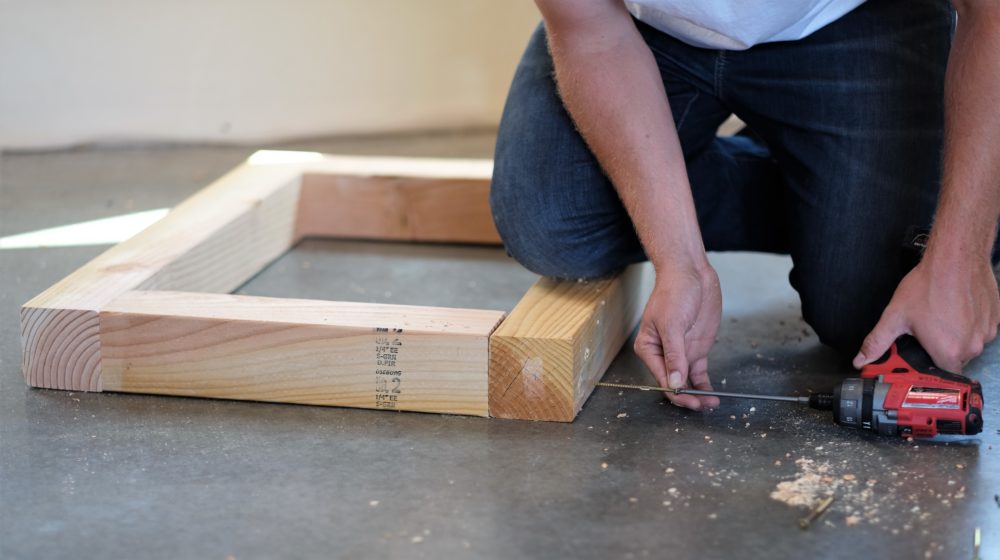
Building The Table Base
The next step is to create the other two legs to attach to the sides of your rectangle. (The diagram below shows a piece going across the top, creating two rectangles, however, we left that section off due to the fact that our table top would be covering it up anyway. The top of the first rectangle we made in the previous steps (red lines) was sufficient enough for support the top of the table.)

Measure, mark, and cut two 13.75″ sections and two 13″ sections using 4″ x 4″ boards. Then using a drill, attach the first 13.75″ section to the end of one of the 13″ sections, forming an “L”. Repeat with remaining two boards.
You should now have two legs in the shape of an “L” that look something like this:
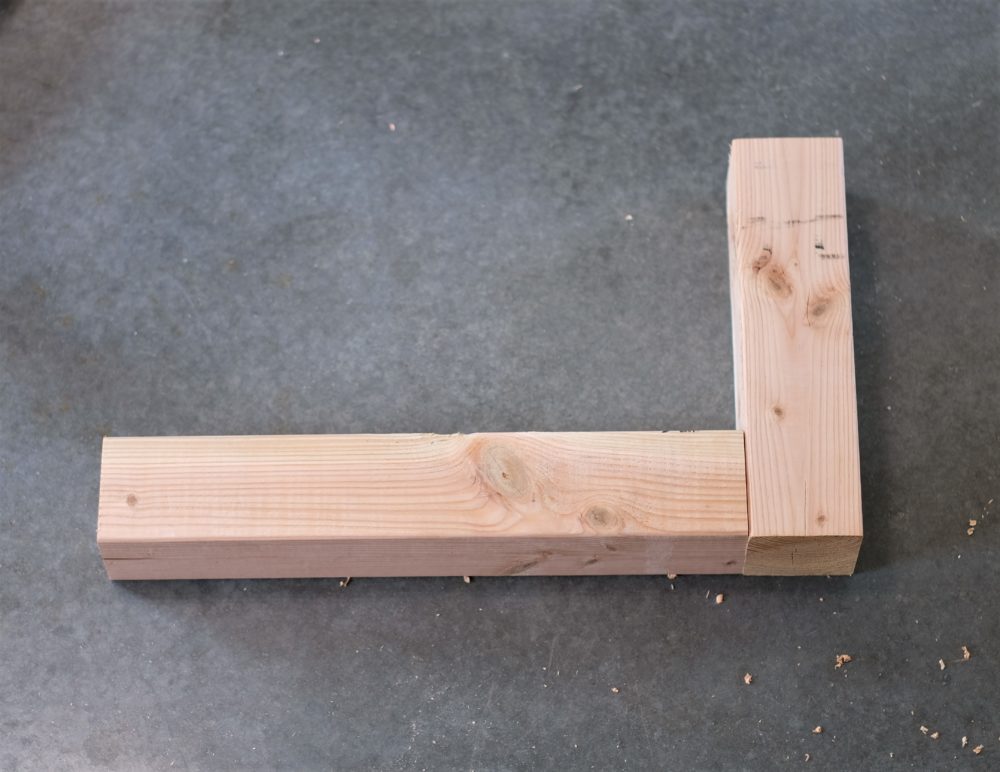
In order to attach the two legs to the rectangle base, you will need to use a wood dowel kit. Here’s where it gets a little tricky so I am going to break these down into concise steps:
- Get the 3/8″ drill bit from the wood dowel kit and set the depth to about half the length of the dowels.
- Drill four holes into the end of the 13.75″ bottom section of the “L” (the longer section is the bottom in this tutorial). Do not stress about where the holes are, just make sure they are evenly spread out on the end of the board.
- Place a 3/8″ metal dowel insert center-punch (from the wood dowel kit) into each of the holes. It should look something like this:
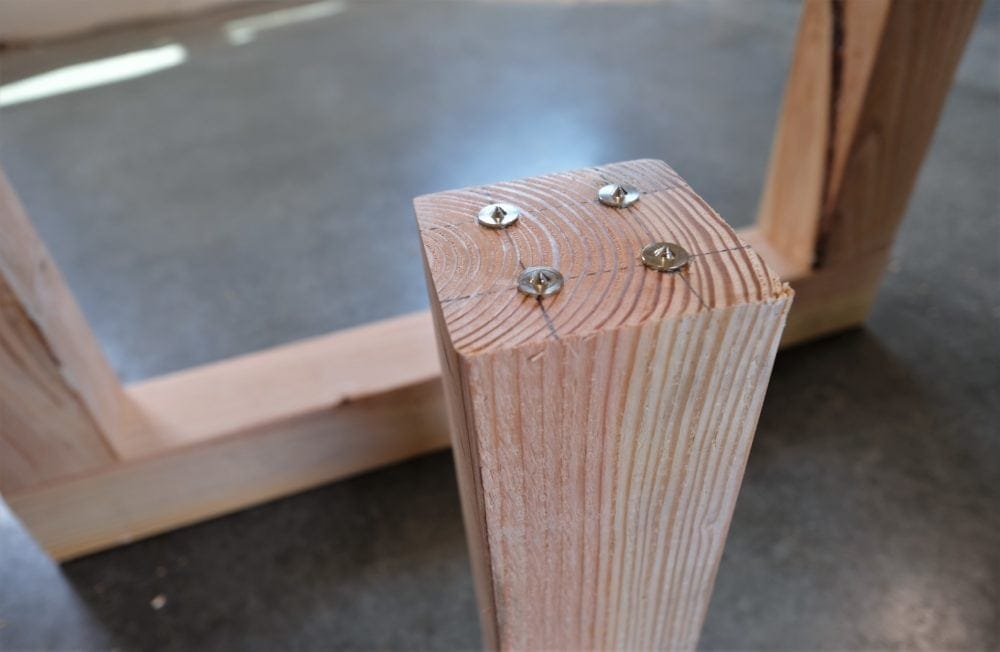
4. Carefully position the “L” right in the middle of the bottom of the rectangle with the metal dowel insert center-punch touching the base. Hit the back of it with a large hammer. The dowel punch inserts will mark where you need to drill on the center board.
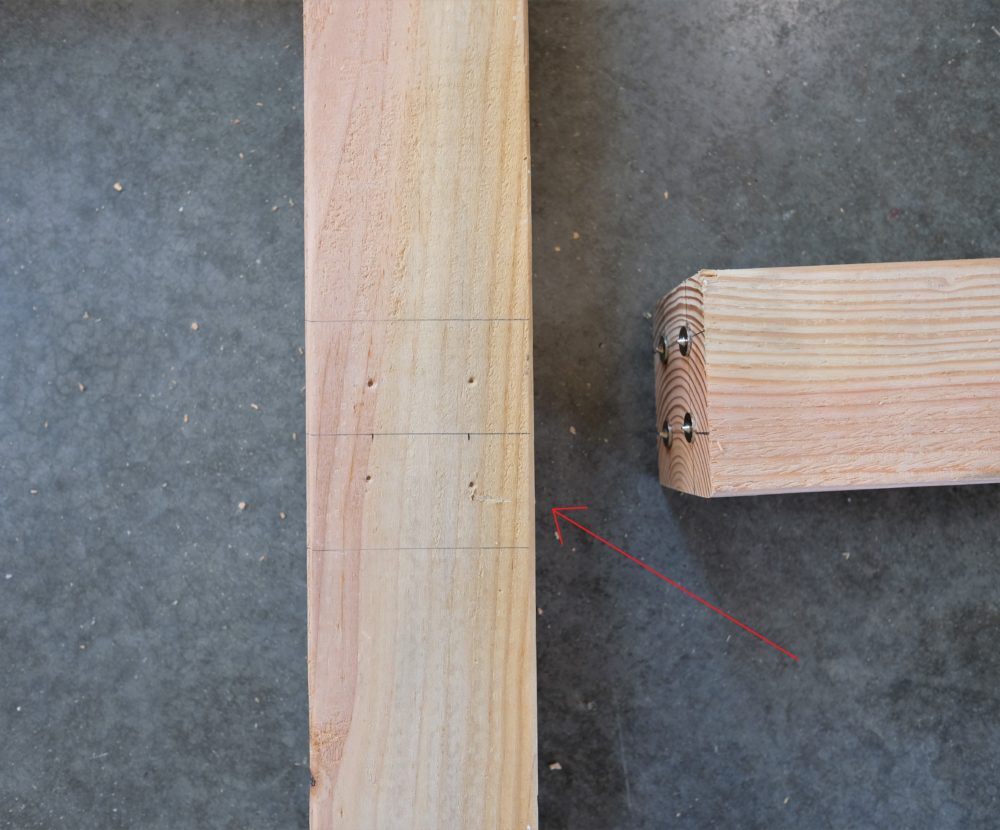
Repeat these steps using the other leg, marking the other side of the board. You should have 4 marks on each side of the bottom section of the rectangle. Drill a hole where each of the marks are.

From here, remove the metal dowel insert center-punch and apply glue to four wood dowels, inserting them into the holes. Apply a thin line of wood glue around the holes and join one of the “L” legs to the bottom of the rectangle. Do this by lining the wood dowels up with the holes and press together by hand. If more force is required, hammer them together until they are tightly joined.
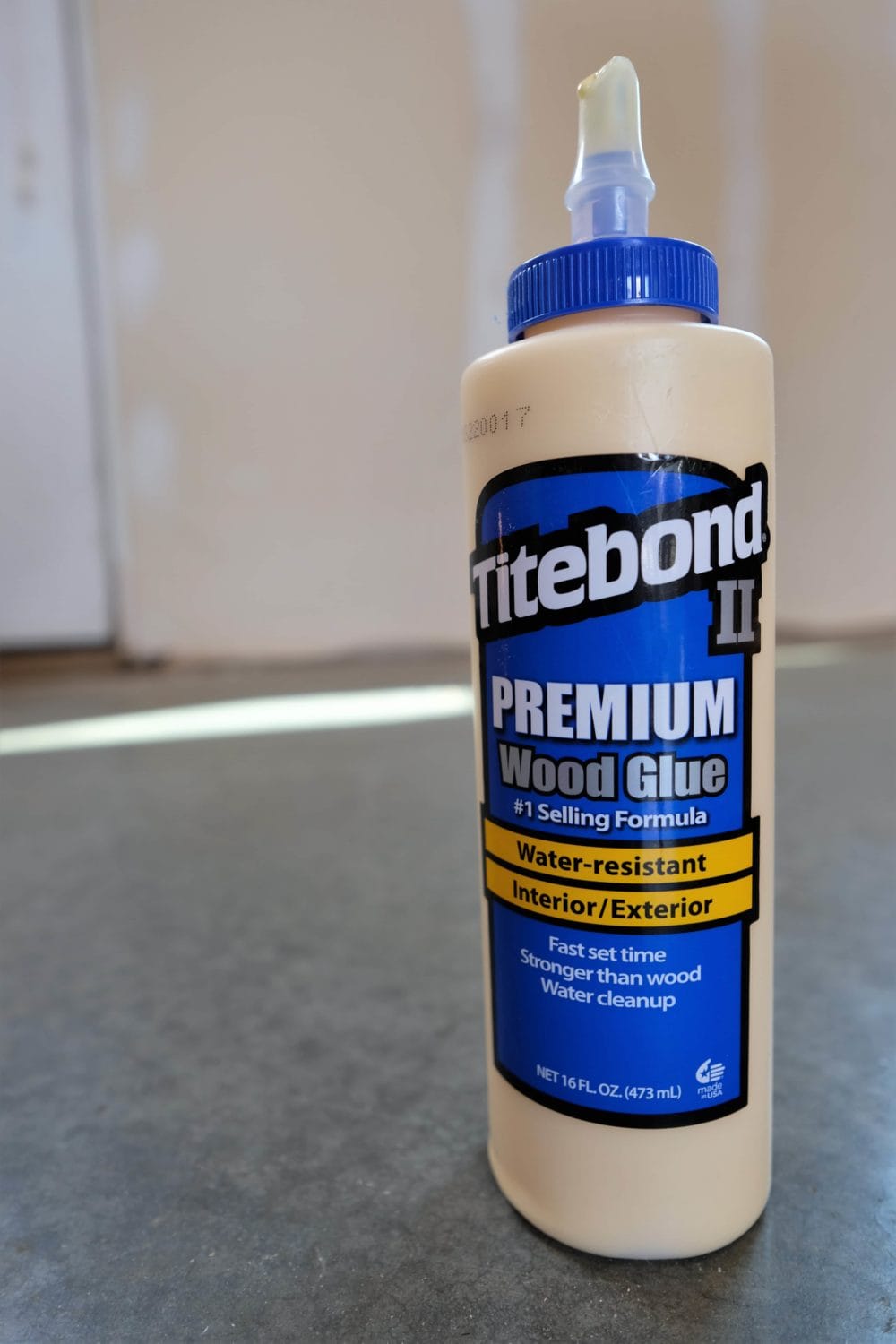
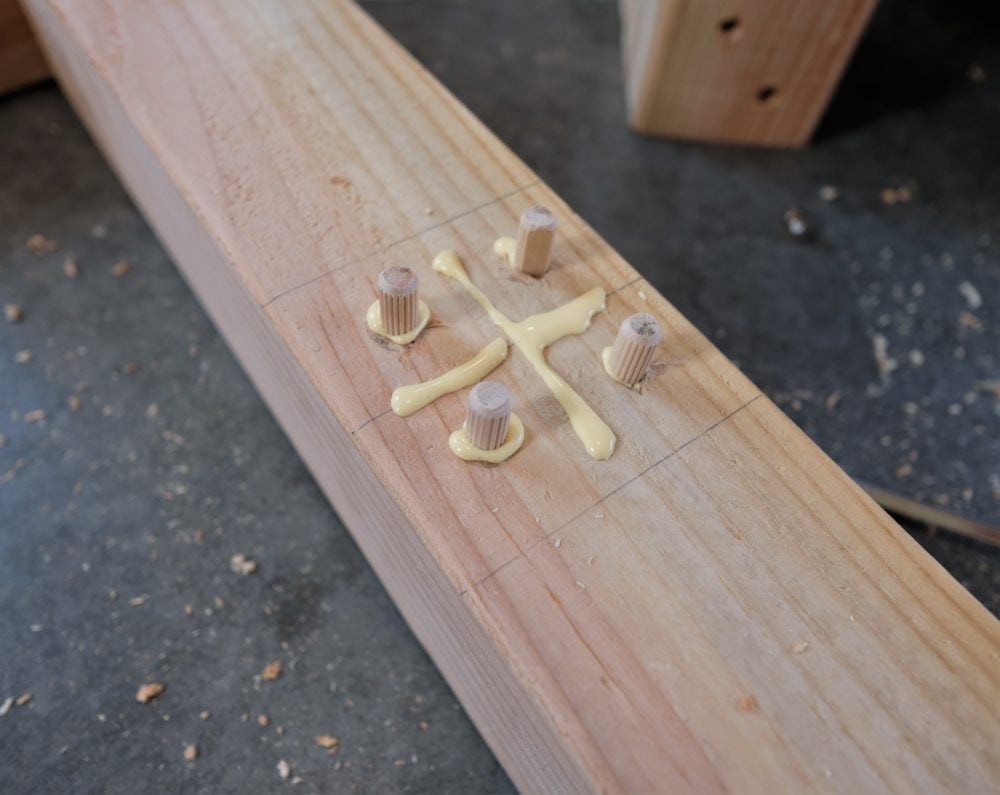
Now you should have something that looks like this:
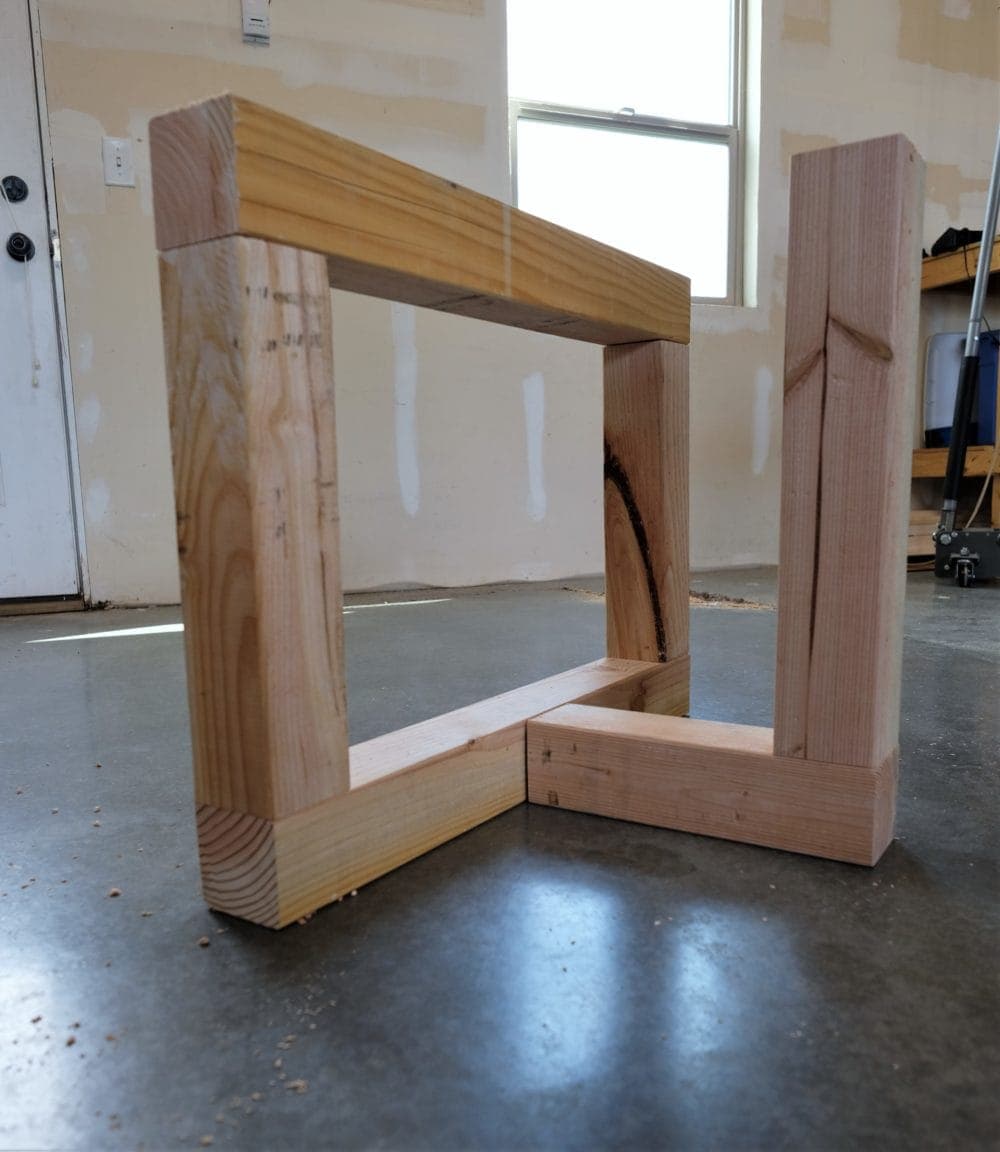
Repeat the above steps to attach the second “L” to the other side.
Let dry for at least 24 hours before handling. Once dry, you can then paint or stain the base to get the look you want. I painted ours black using Valspar paint from Lowe’s in the color Noir.
Building The Table Top
To get started on the tabletop, measure, mark and cut both 2″ x 10″ boards in half. Line up all (4) boards to look like a table top.
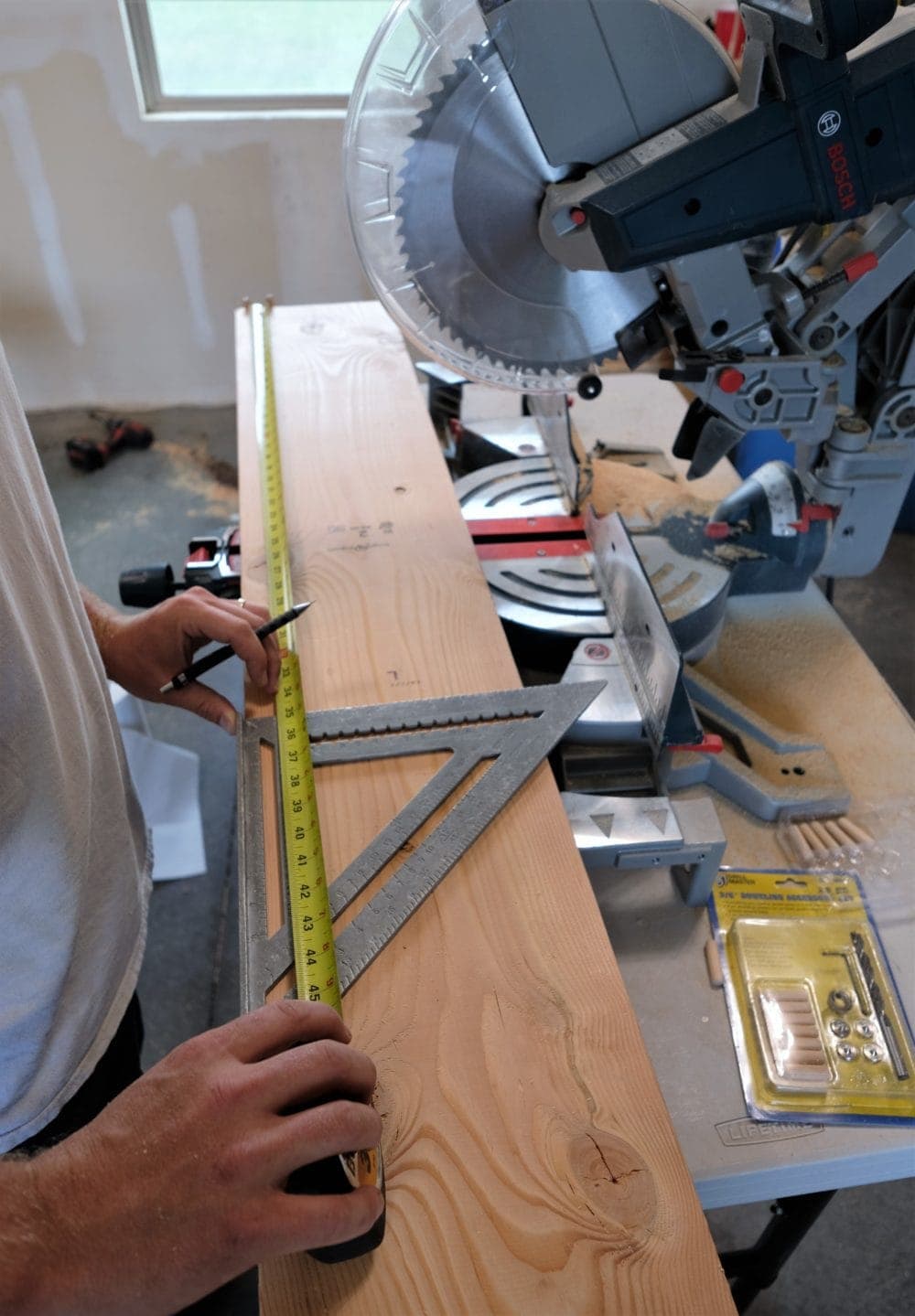
**VERY CAREFULLY** use the long 3/8″ drill bit to pre-drill (3) holes spaced evenly in thirds across one of the boards. Drill to about 6″ depth. This will create a space for you to fit the screw when you go to fasten the boards together. (This requires a bit of skill – be sure to start right in the middle and try not to veer off from center! A handy husband can be extra helpful for this step 😉 )
See the example below:
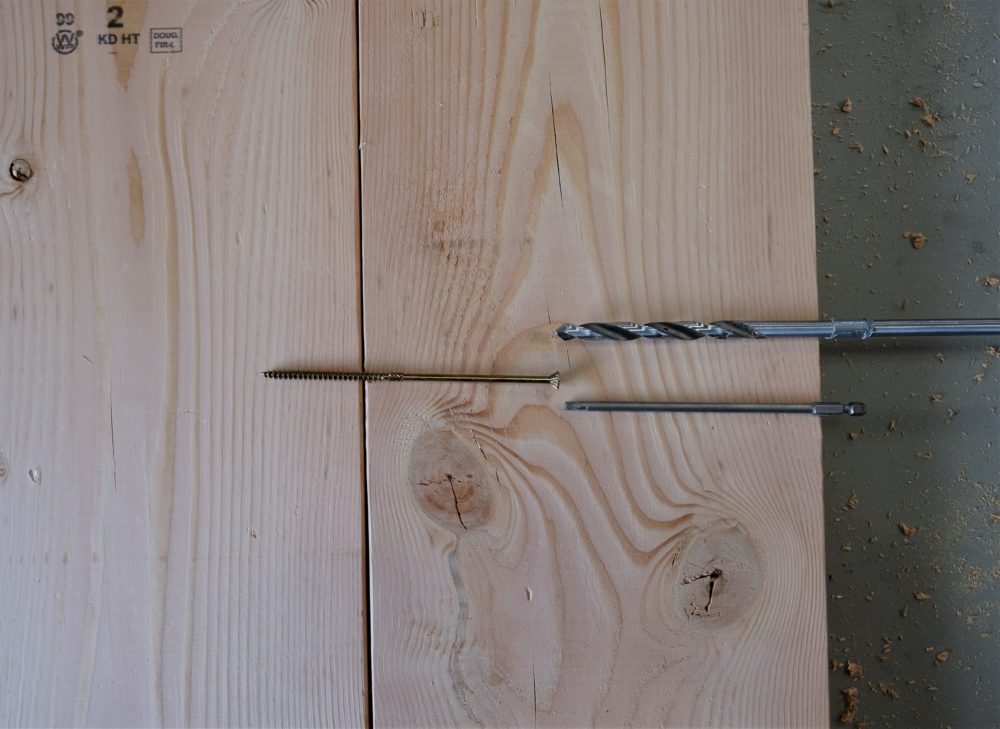
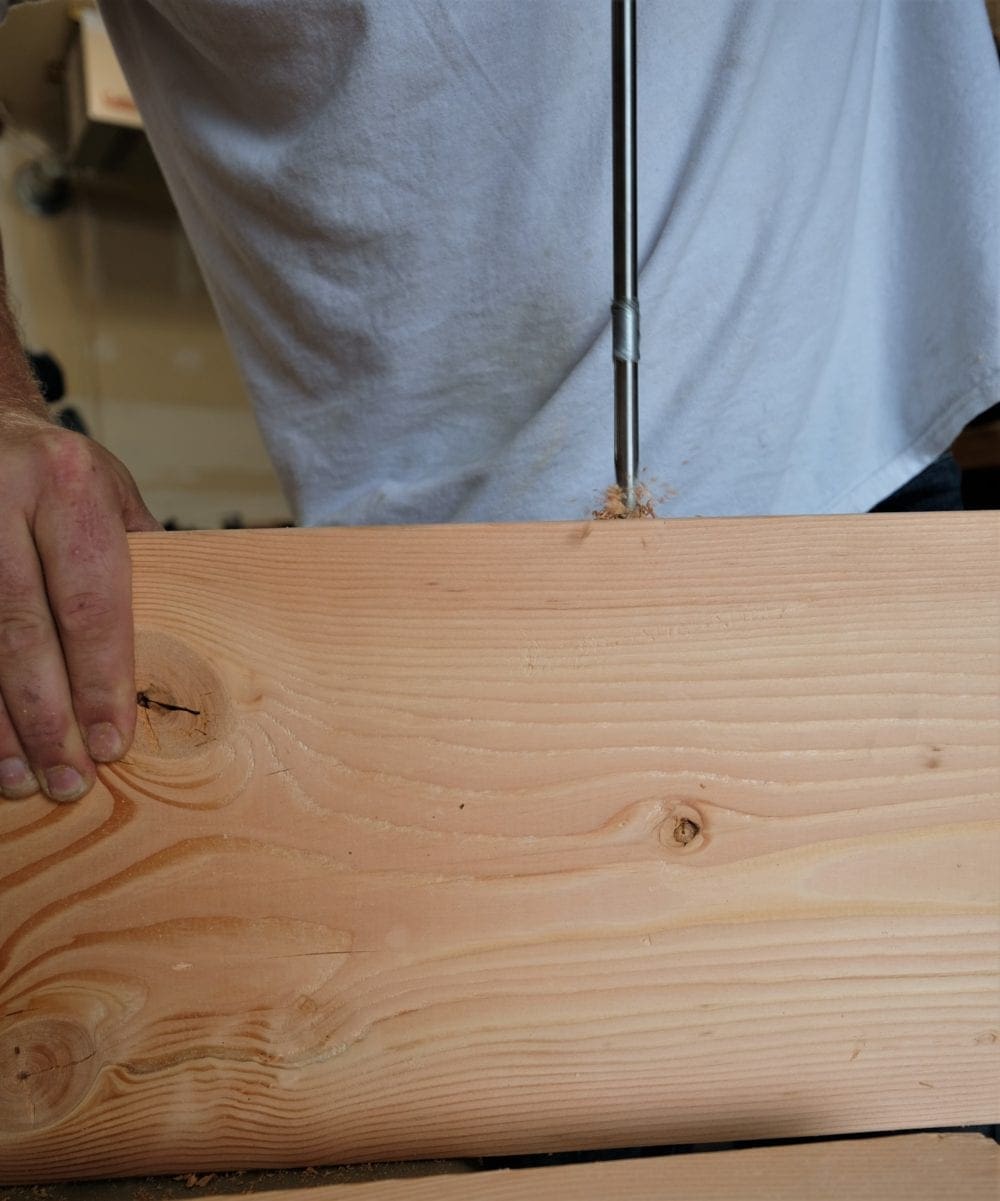
Next, apply a thin line of wood glue along the edge, hold the two boards together, and drive 6″ construction screws into the pre-drilled holes to fasten the two boards together.
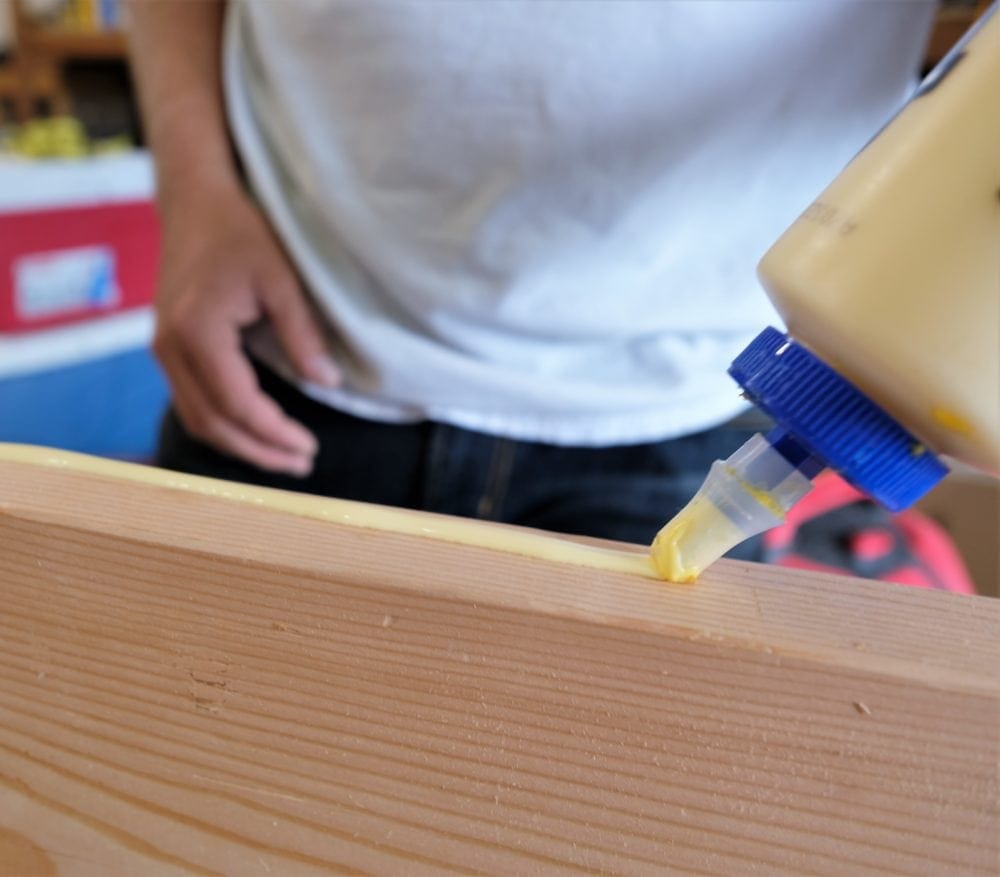
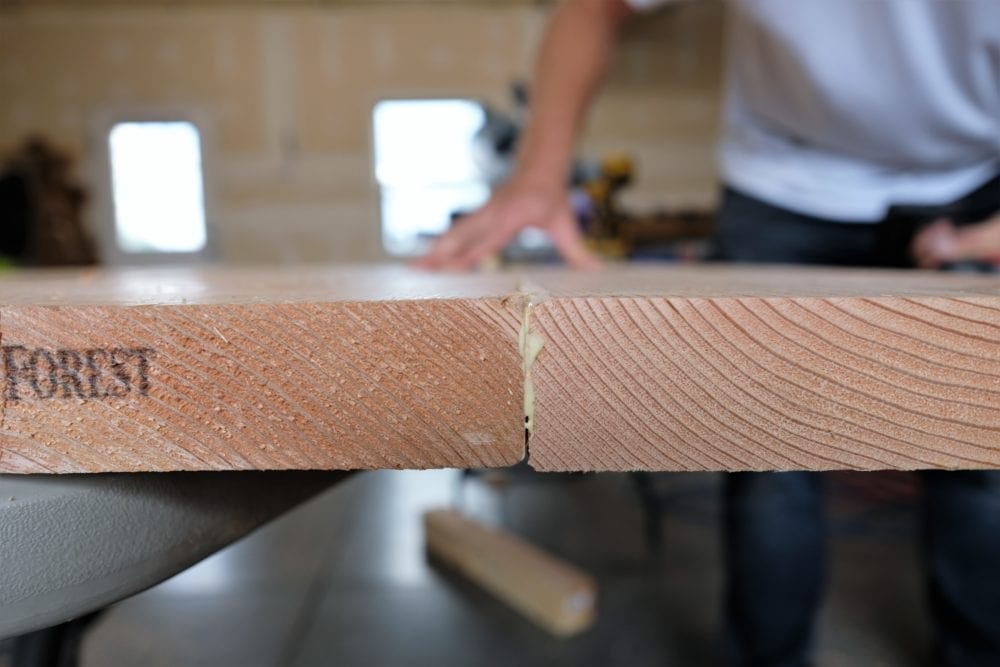
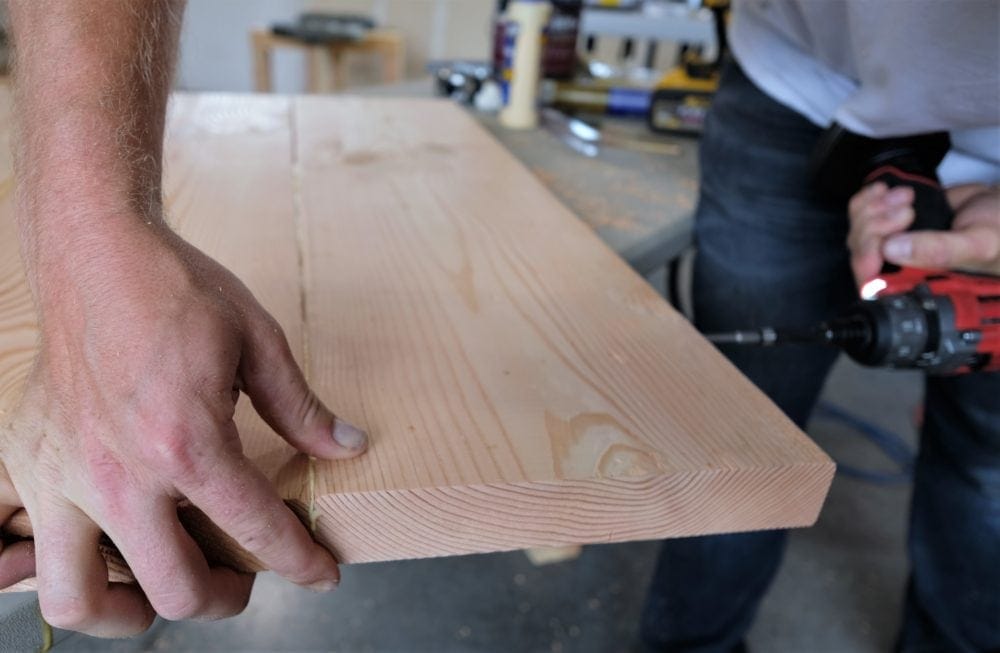
Pre-drill another board, but offset the holes by about 1.5″. If you use the exact same spacing as the previous board, then your screw will line up with your previous hole and have nothing to bite into but air! Repeat these steps until you have fastened all 4 boards together.
At this point you should have a square table top made up of four 4′ boards. You could chose to leave it a square and skip right to the painting/staining. For our table we chose to go with a rounded top, to see how we did this keep reading!
To make the rounded top, use a tape measure to find the center of the table. Drive a small nail at your center mark. Hook the end of your tape measure on the nail and use the tape measure as a compass to mark a circle with a 17.5″ radius. Remove the nail.
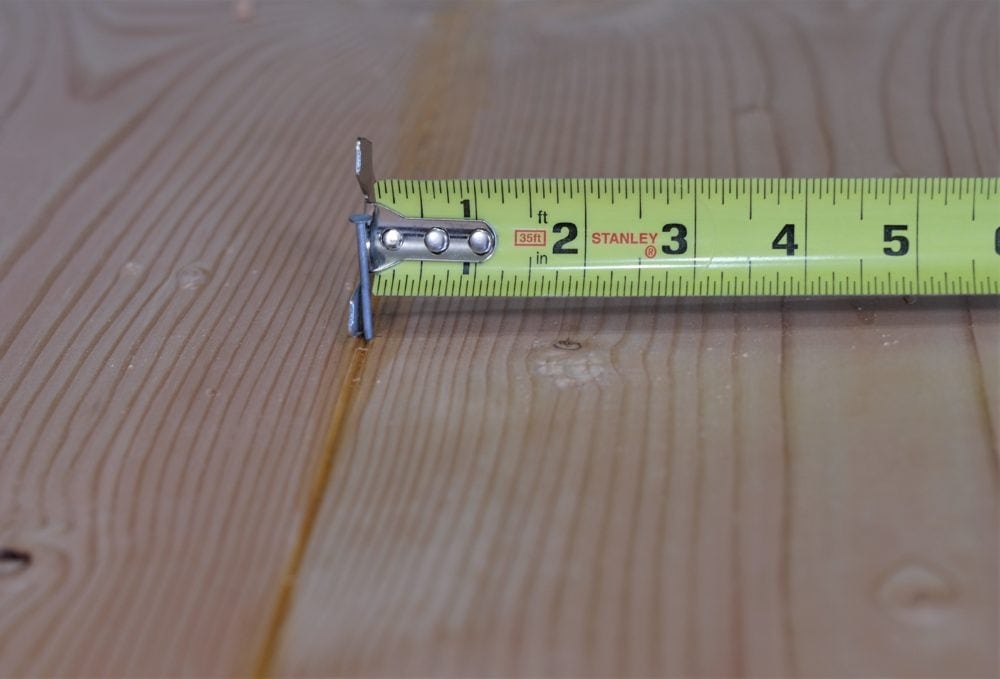
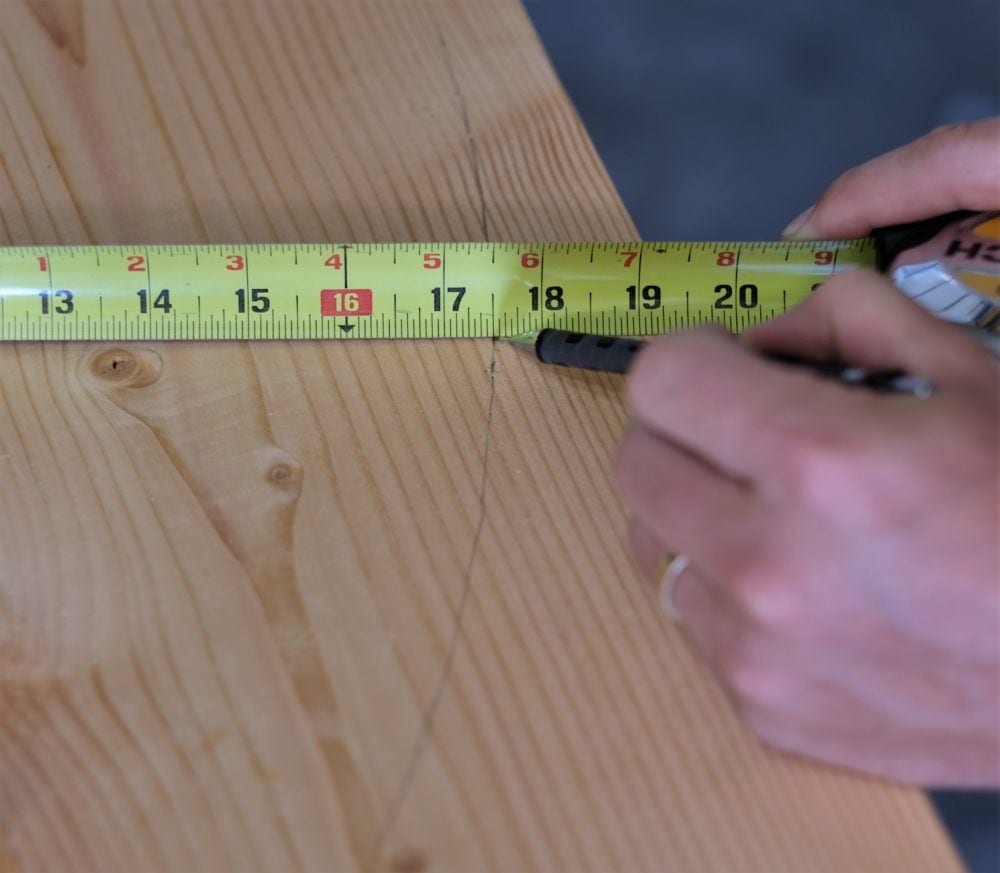
Once the wood glue dries (about 24 hours), cut the circle using a jig saw.
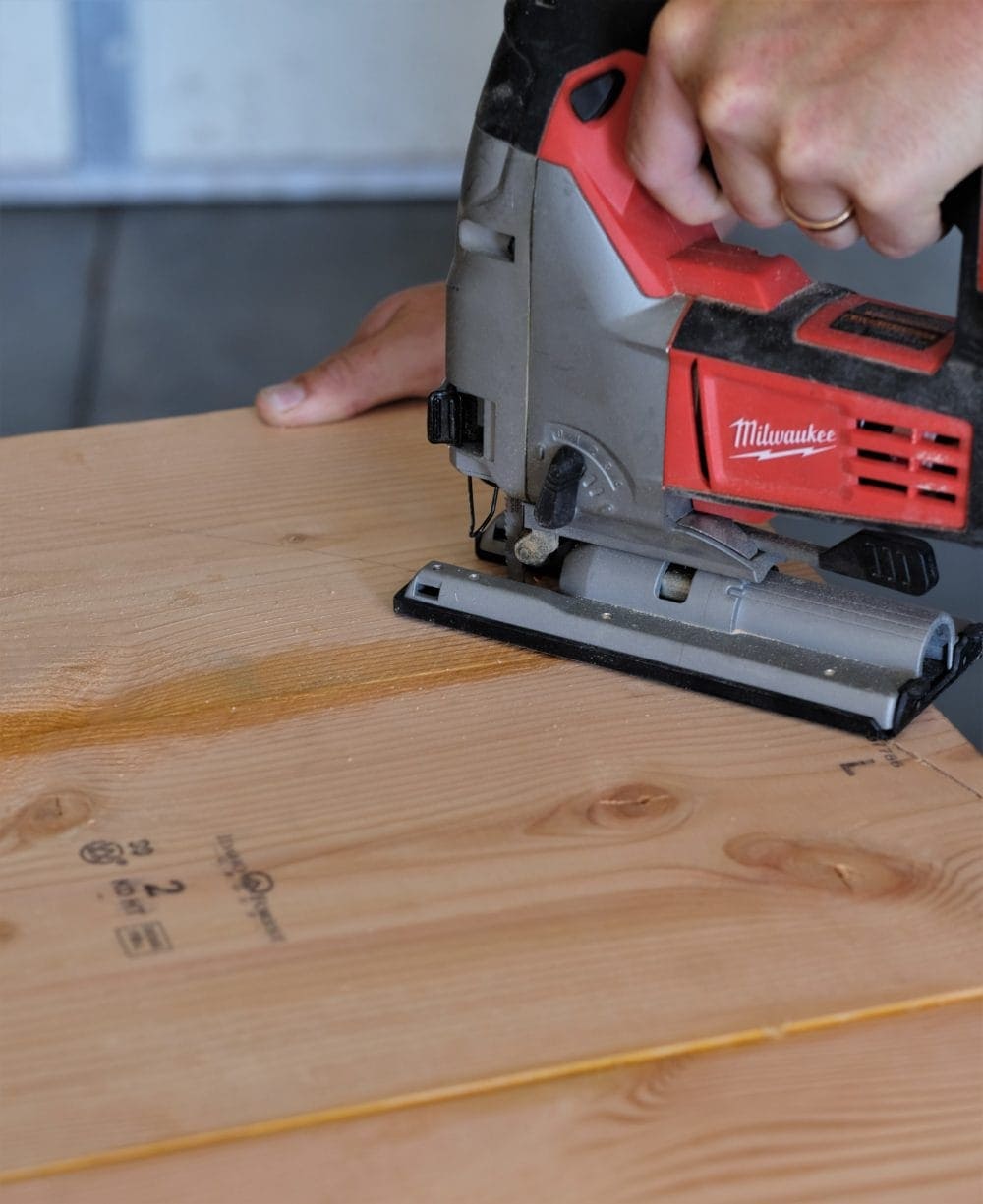
Next, sand the top and around the outside of the table to give it a smooth finish. This Dewalt hand sander was really convenient to give it a quick over, but you could also use a sanding brick from your local hardware store to get the job done.
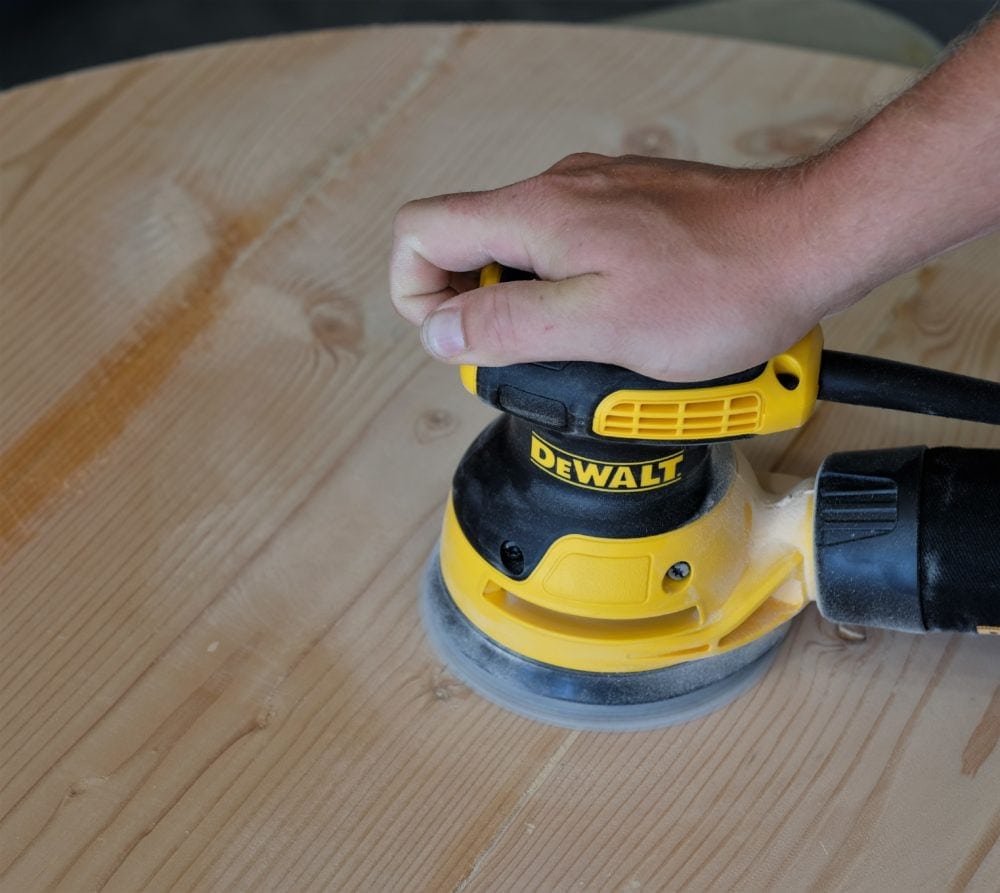
To really give it a finished look and get rid of any sharp edges, use a router and a 3/8″ radius rounding bit to smooth all around the top and bottom edges. This step could be skipped, but for a rustic coffee table at shin height smooth edges are a good idea 😉
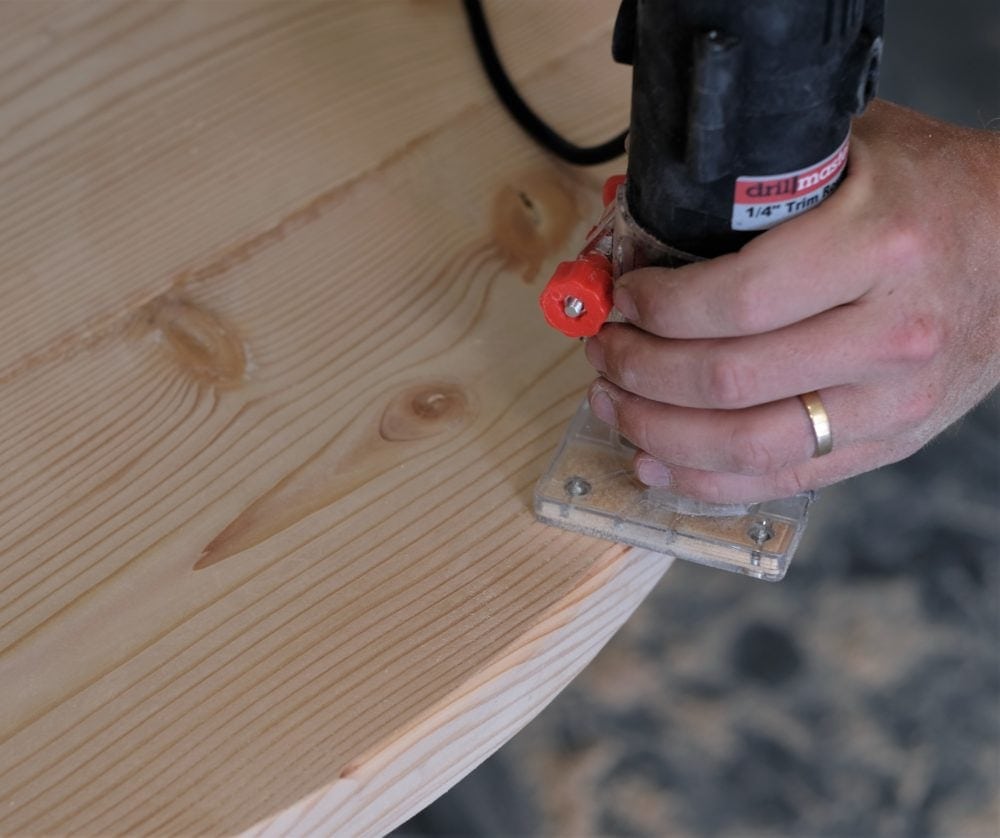
Once finished, it is ready for paint/stain and should look something like this:
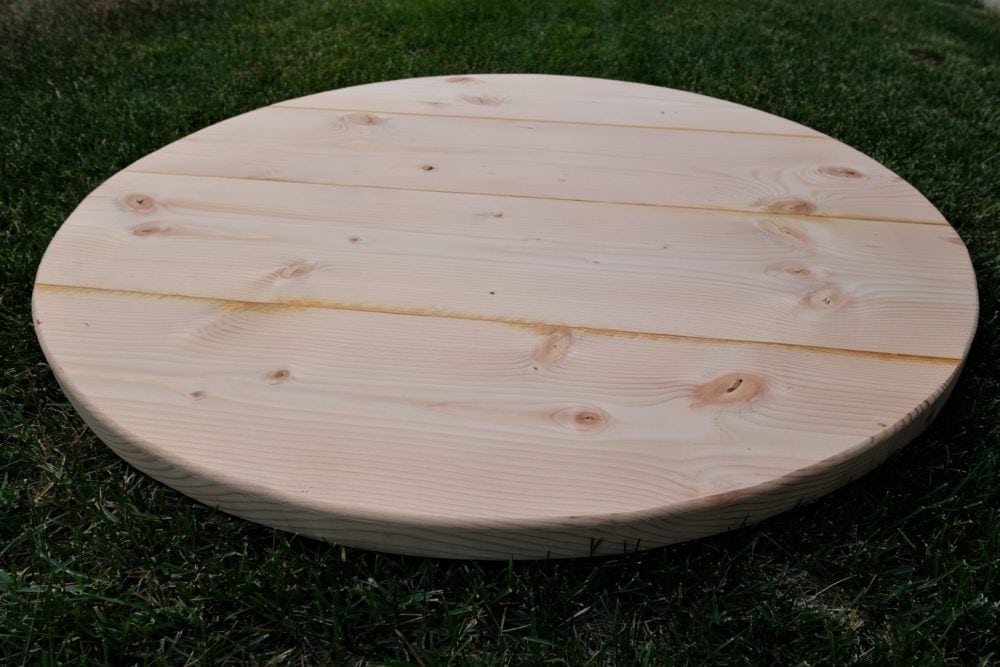
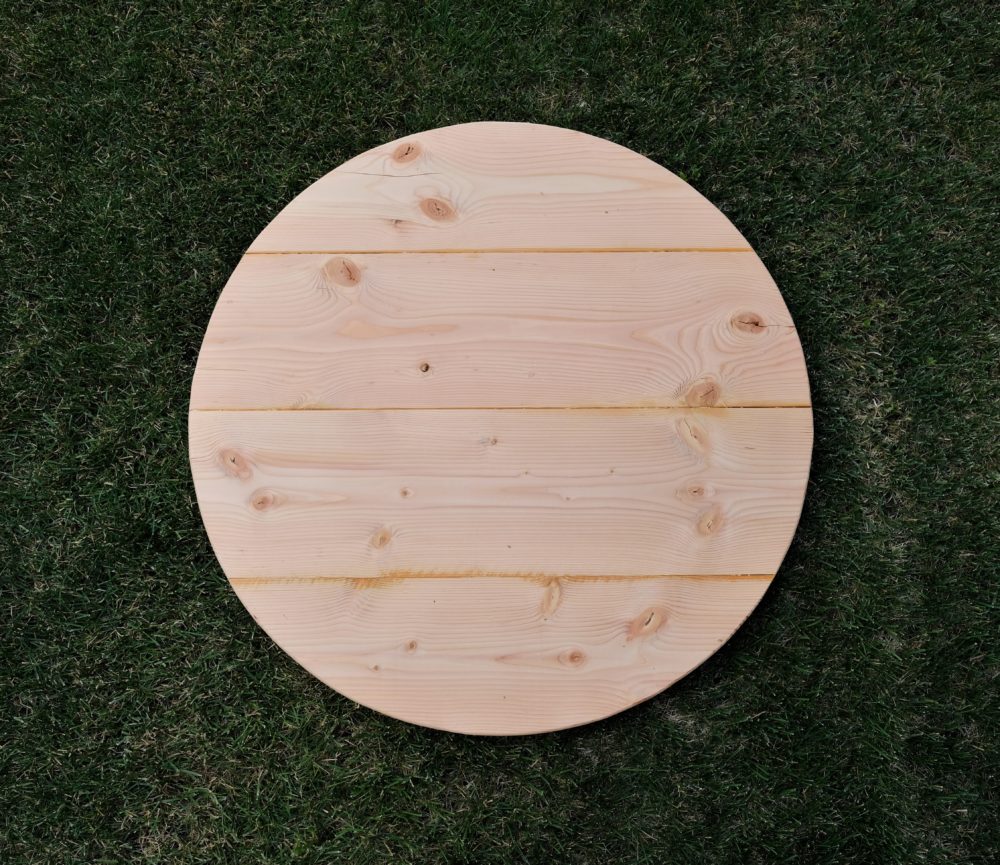
tip: build the base, and the tabletop on the same day so that they can dry for 24 hours at the same time!
Assembling The Table Top To The Base
Set the tabletop on the base, and center it using a tape measure. There should be about 1.5″ between the outside of each leg, and the edge of the tabletop. Mark where each leg goes on the bottom of the table with a pencil or sharpie. Then, use the dowel and wood glue technique from previous steps (drill, mark with dowel insert punch, assemble with dowel and wood glue).
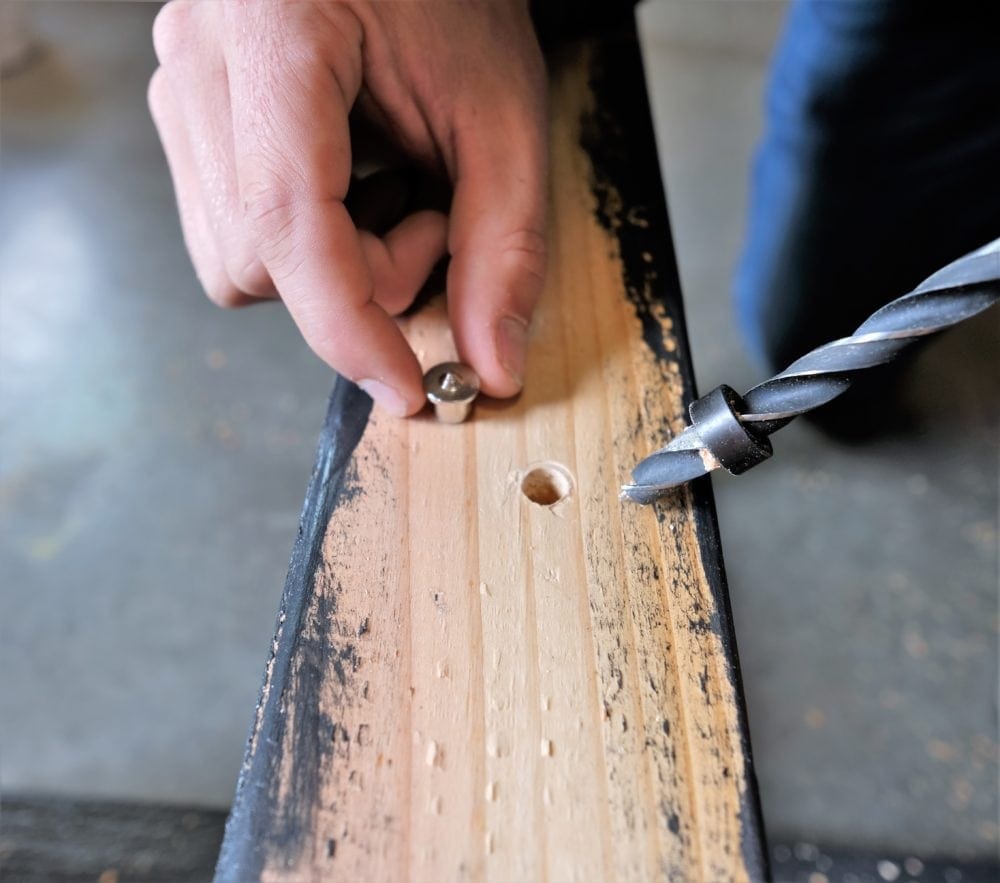
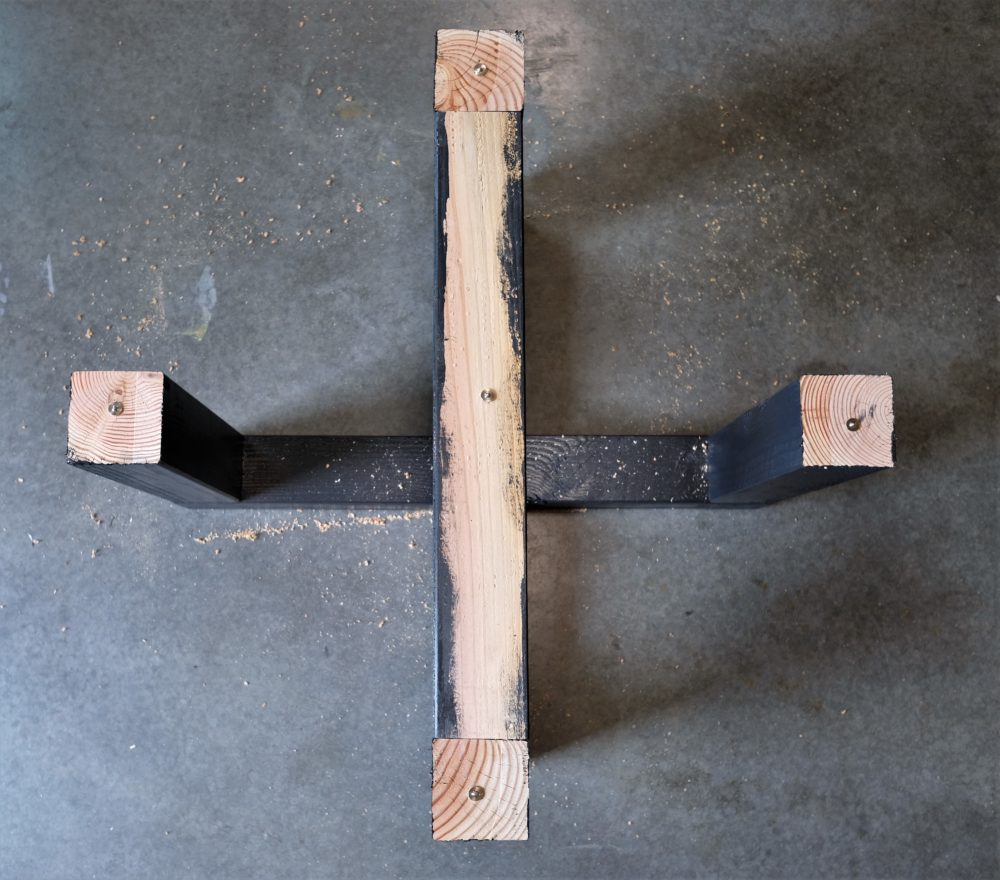
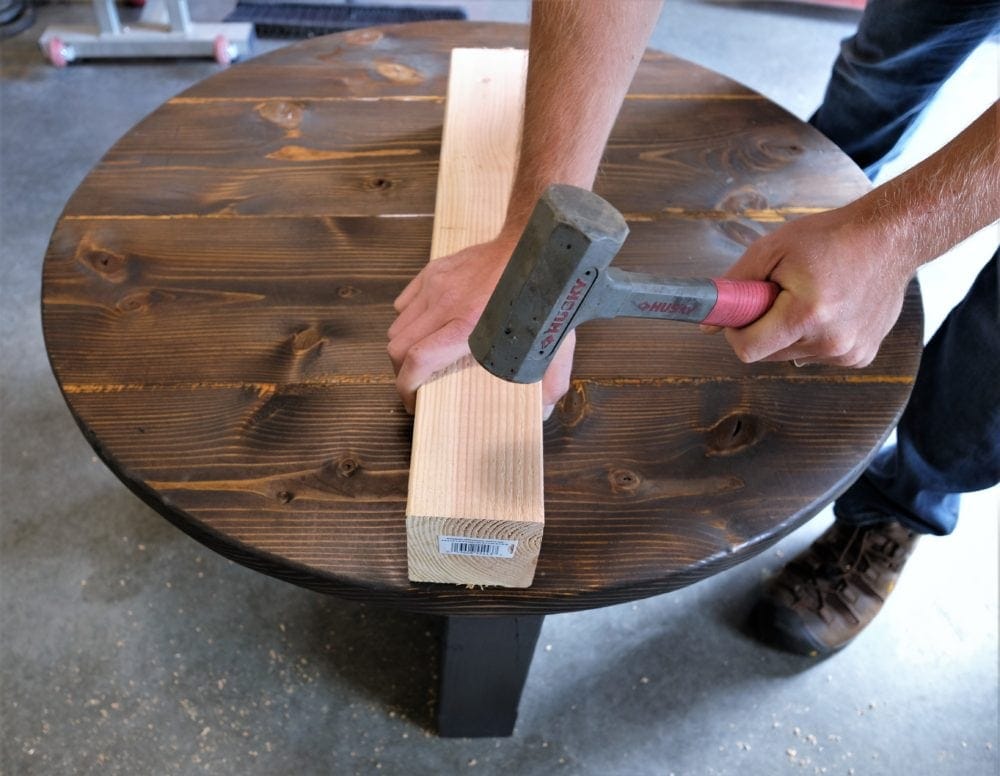
Let the glue dry for at least 24 hours and it is ready for use! Whew! That may seem like a lot of steps, but I wanted to break everything down to give you as much detail as possible. Whether you are using it inside or outside, this rustic coffee table is definitely a conversation piece!
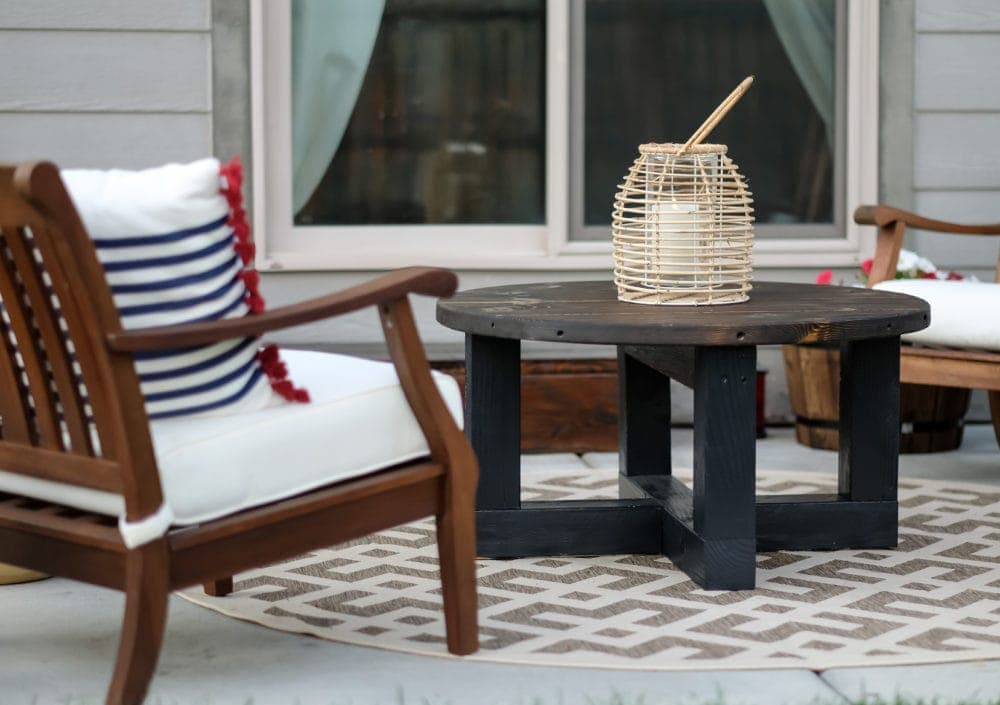
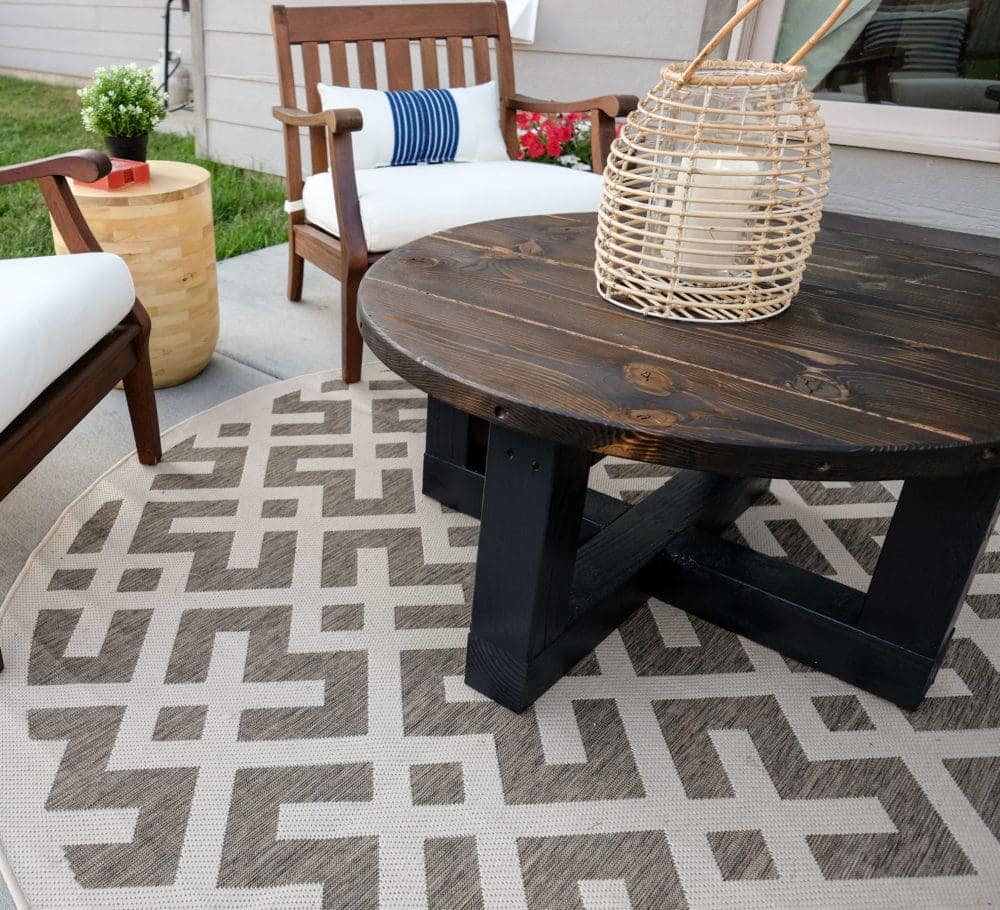
I am THRILLED with how it turned out! This rustic coffee table is not only sturdy and durable, but it also costs well under $100! Win-win! I hope you found this tutorial helpful! Want to check out more of our DIY projects? You can find them all in my project gallery here 🙂
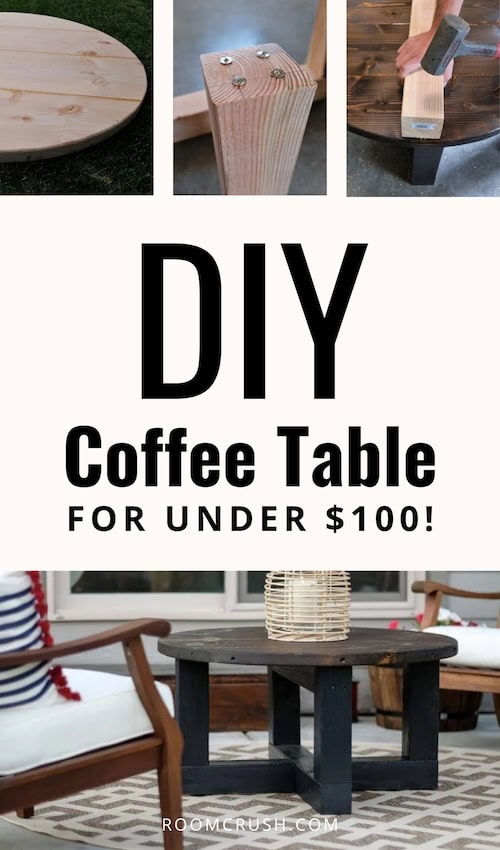
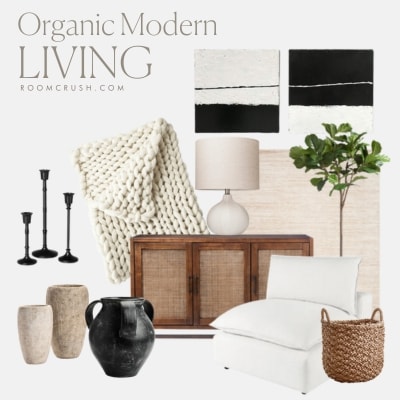


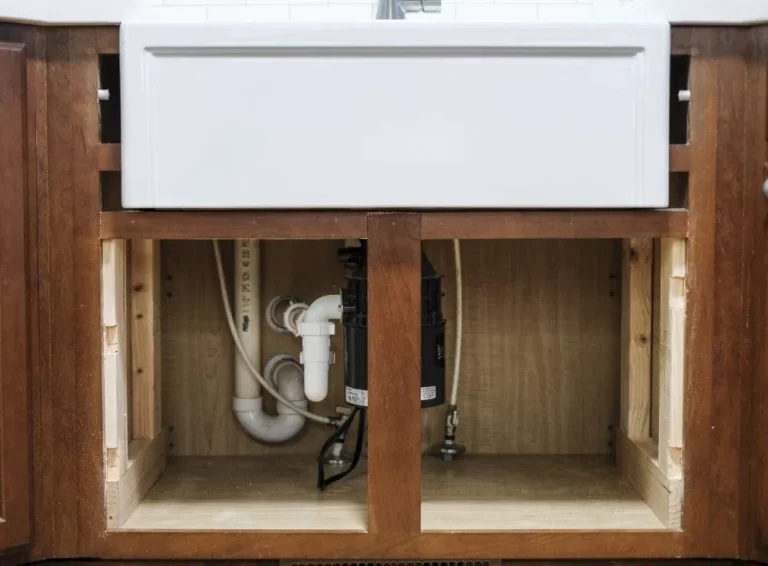
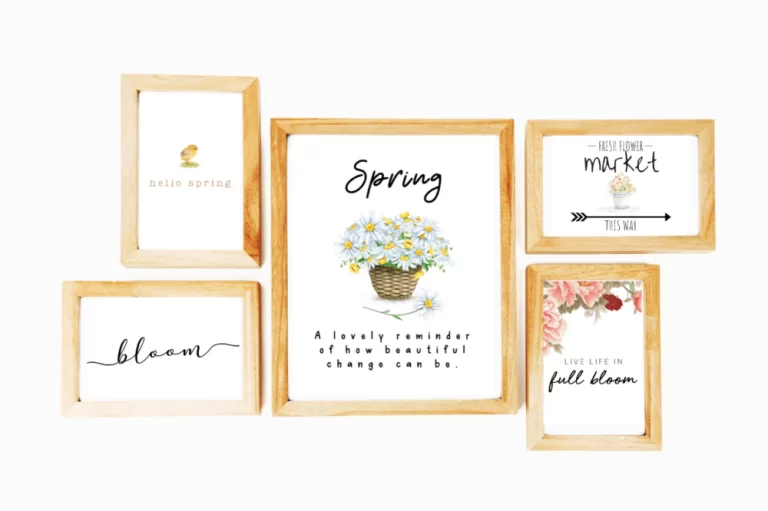
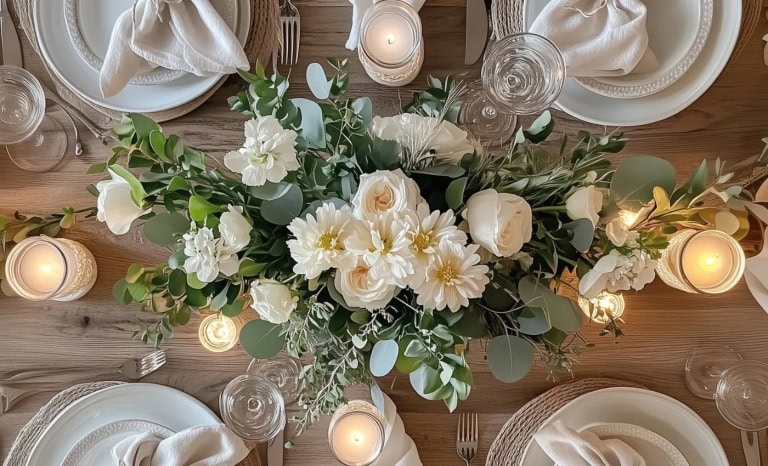
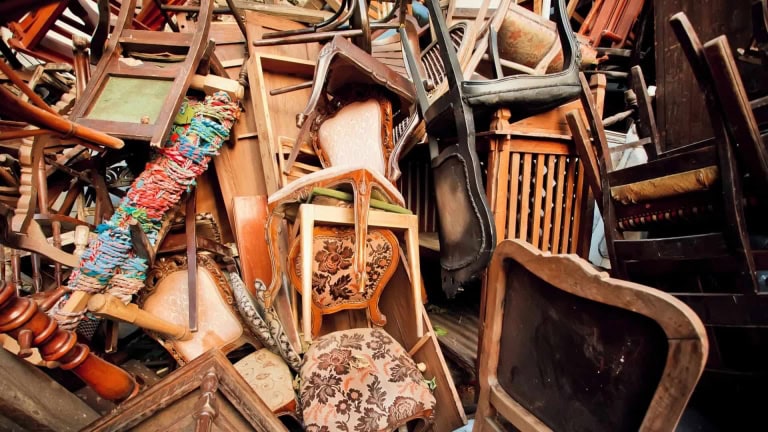
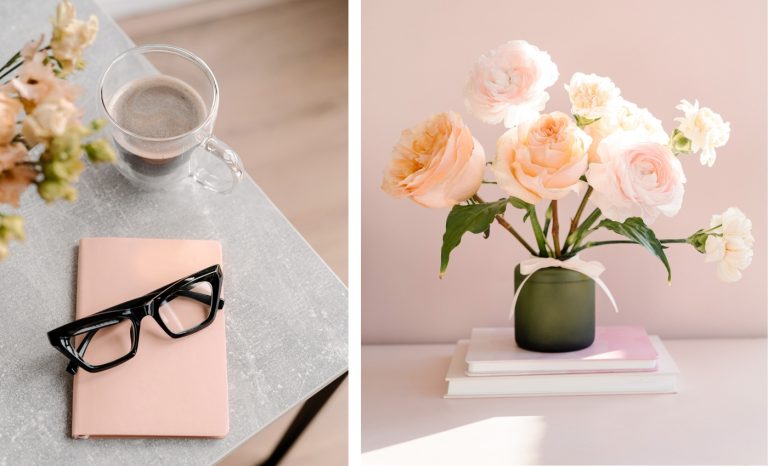
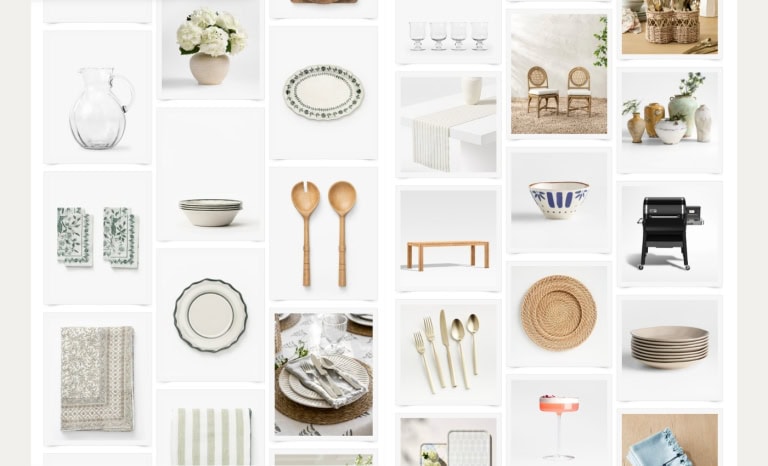
Hi Ashley. You are so clever! I have never done anything like this before but I want to try. Do you think a beginner could make this?
With the right tools, yes! We try to make our tutorials easy to follow for any skill level 😊
Excellent Designs,I like it, Thank you for sharing ideas.
You are so welcome!